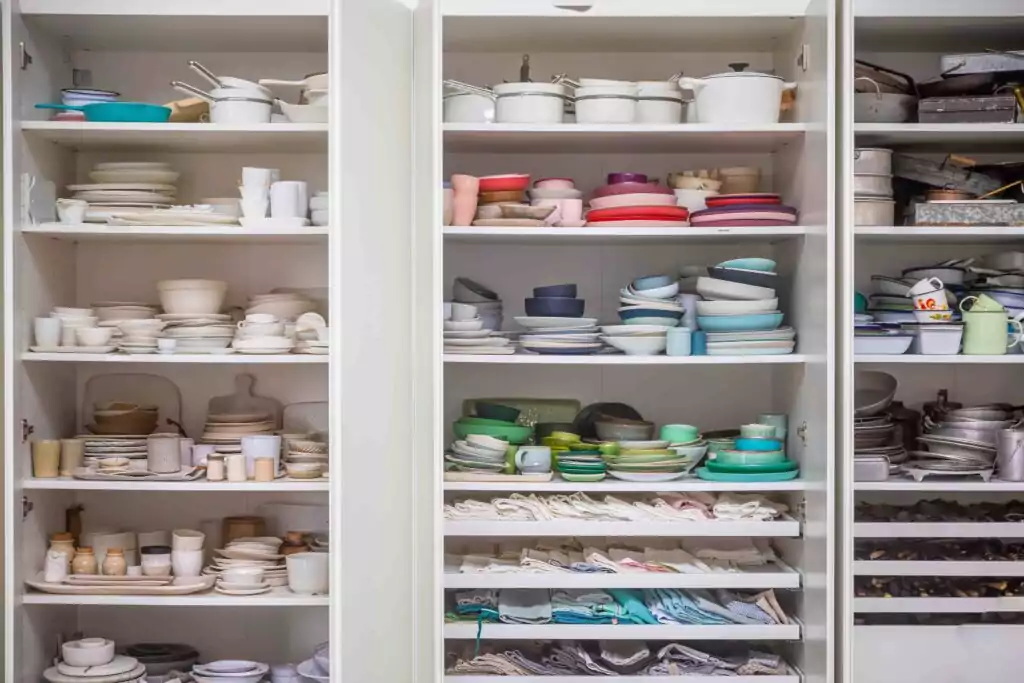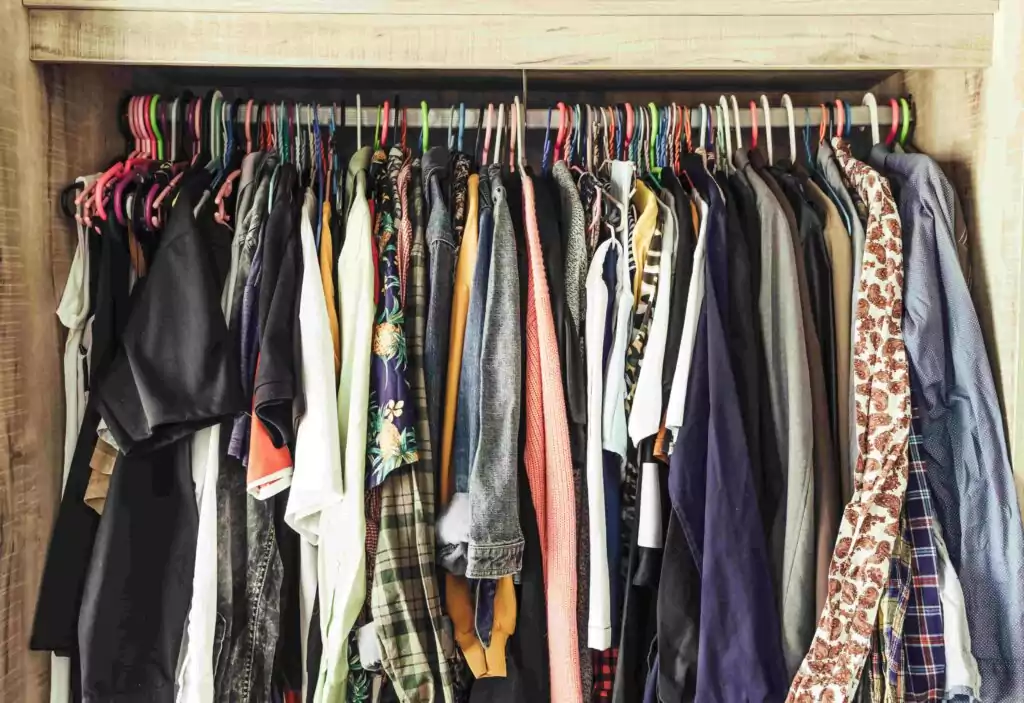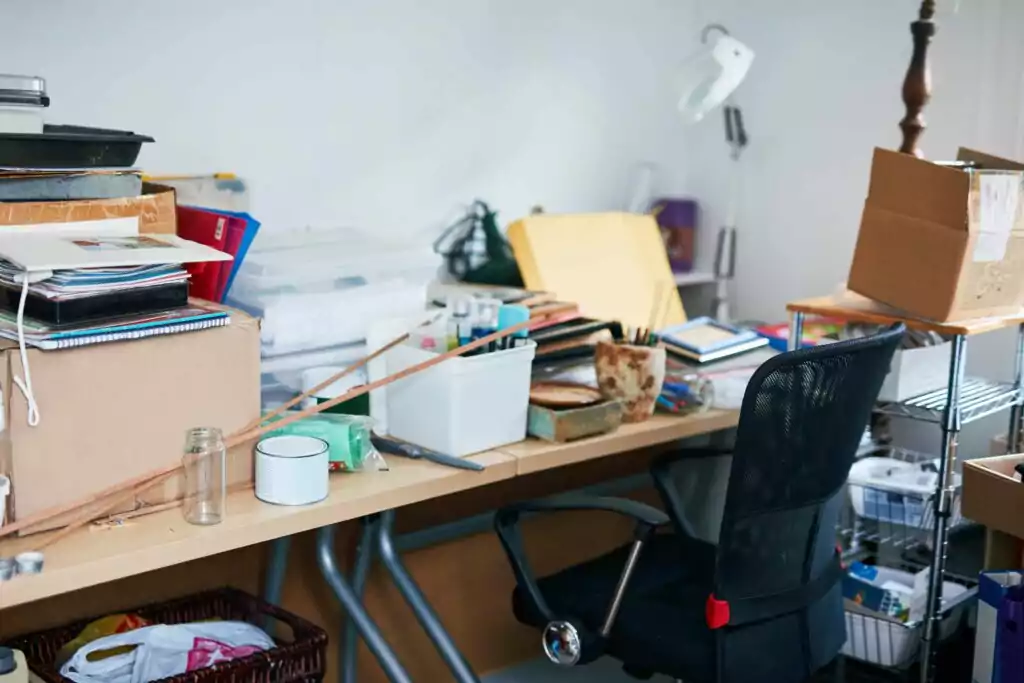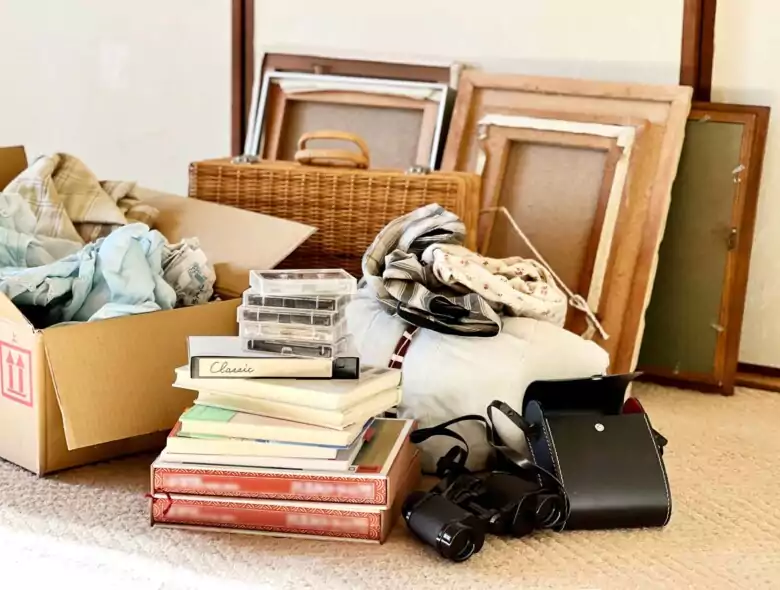Perhaps the most time-consuming and daunting aspect of moving is knowing what to keep and what to sell, donate, or throw away before packing commences. It also perhaps comes as no surprise that taking everything you’ve accumulated over the years can become a very expensive endeavor when it comes to moving costs so it’s necessary to scrutinize all your belongings objectively in order to stay within budget and reduce unnecessary waste.

Minimize
There are a plethora of ways one can minimize their belongings prior to moving, keep their carbon footprint to a minimum, and still have fun while doing so. Questions that should be asked before sorting through everything can include:
- Can it be fixed (for a reasonable price)? Or would it be cheaper to buy a new one?
- Will it fit in the new place?
- Does it fit the aesthetic of the new place?
- Do you need it when you move to your new place? (For example, if you have furniture but are moving into a furnished apartment, which Village House can provide, you wouldn’t need to bring your furniture with you)
- Has it been used in the last year or so?
- Are there multiples of ____?
- Will it be difficult to pack, move, and transport? Is it worth moving?
- Do I / my partner/kids etc. still participate in this sport/hobby/activity etc.?
Use the questions above to curate an inventory of your belongings, which then can be sorted into categories such as: Keep; Sell; Donate; Throw.

Wardrobe
Something that tends to multiply and accumulate alarmingly over the years is clothes and shoes. Take stock of clothes and shoes that are worn, tattered, have holes in them; no longer fit, or haven’t been worn in over a year. Sort them into bags labeled sell, donate, or throw.
If moving to a place with a warmer climate, consider getting rid of some winter gear to make space. Similarly, discard any old school uniforms, sports clothes, and work attire that are no longer being used because a) the kids have outgrown the uniforms or are moving to a different school; b) you’ve retired from a sport or hobby, and c) you’ve changed jobs or now work from home.
Bedding, linens, and towels are also items that tend to multiply. Discard any threadbare, discolored, stained, etc. towels, bed sheets, and blankets; and decide how many sets of bedding, linens, and towels are realistically needed and necessary when moving into your new place.
Lastly, hangers tend to grow in excess the longer you stay in one place and the same thing is bound to occur once you move into your new place ;so, consider donating or throwing away any broken, misshapen, and structurally unsound hangers prior to moving.
Expired
One will be surprised just how many expired products can be found lying around the house that is not food related. Everything from emergency rations to medicines to supplements and vitamins to toiletries can unknowingly expire without your knowledge; so, take stock of these items and bin them.
Locate any outdated, broken, and/or unused electronics and sell, donate, or throw those too. Gadgets such as CD players, VCRs, and old desktop computers can be sold or donated or to recycle shops to be refurbished or stripped for parts.

Food Products
We’ve been told from a young to clean our plates so as to not waste food. Well, the same philosophy can apply to the still perfectly good-to-use and-eat food in your fridge and pantry. A fun and creative way to use up these food products are to throw a “moving out party”. To minimize any food waste, try to host s such parties as close to the moving out date as possible without hindering the entire moving process. You can also give out unopened food products as party favors when your guests leave.
Another option would be to donate any long shelf-life foods aka. tinned foods, instant noodles, and snacks like cookies and chips to food banks and charity organizations. Not only will you minimize waste, but you’ll be helping those less fortunate.

Paperwork
Reams and reams of paperwork are something that accumulates in shocking amounts without you realizing it – old bills and receipts, instruction manuals, tax forms and tax return documents, work and school contracts, warranty cards, etc. To ensure that important and necessary documents aren’t accidentally thrown away, carefully sift through all the paperwork in the house and either keep or take a digital copy of seemingly important documents before shredding the rest.
Knick-knacks & Décor
Turning a house into a home usually means investing in decorations. No doubt there will be an uptick in the number of knick-knacks, flower vases, seasonal décor, birthday decorations, etc.; but while they add a personal touch to an otherwise impersonal and drab room, it may not be necessary or wise to pack them all. Keep those of sentimental value and sell, donate, or throw the rest.

Unknowingly Abandoned
Books never read or haven’t been read in years. Old toys and games that the kids have outgrown. Baby gear. A teetering stack of old magazines and newspapers from subscriptions long canceled. Unwanted birthday and Christmas gifts you’re too guilty to throw away. That set of golf clubs when you thought you’d try something new but ended up hating the spot.
All of the above can be sorted into the Sell, Donate, or Throw categories because all they’re doing is gathering dust on the shelf or taking up space in the back of your closet; and they’ll more than likely end up doing the same thing if moved to your new address.
Conclusion
In conclusion, moving can be a chore when it comes to sorting out one’s belongings before packing and moving. However, by looking at everything with a careful and objective eye, one can cut down on the amount of stuff they have by deciding what should or needs to be kept and what can be donated, sold, or thrown away. You can also save yourself any future headaches when you want to move again by selecting properties owned by organizations such as Village House, which provides an appliance rental service.



